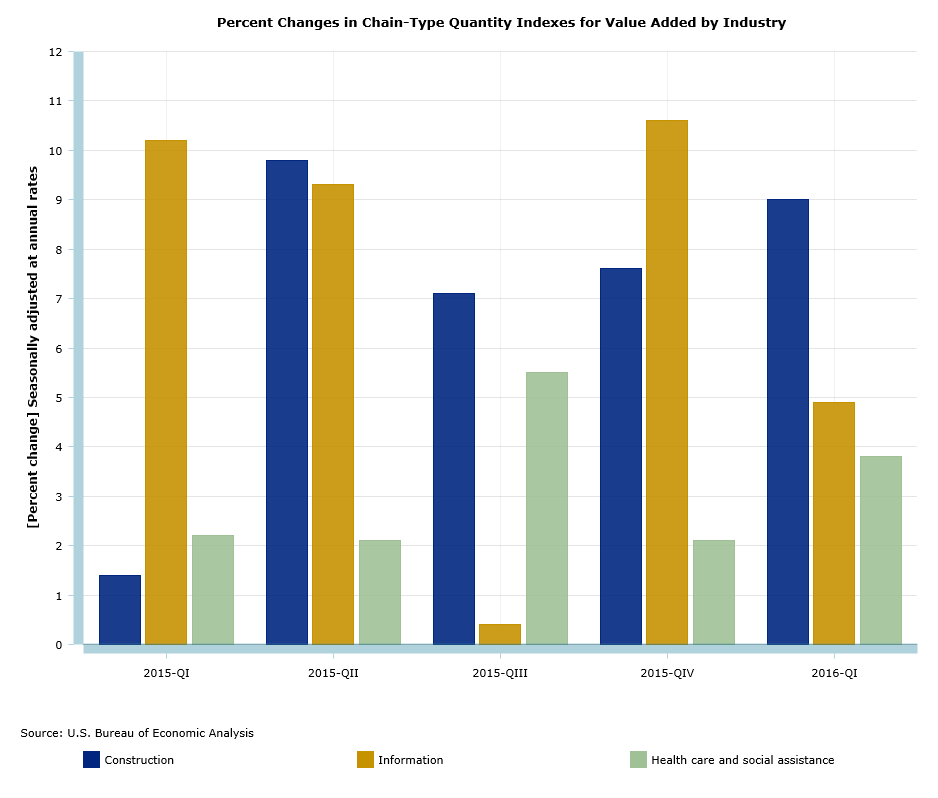Although the U.S. economy has changed considerably over time, construction is an industry that’s maintained its importance. We no longer depend on telegraphs as we once did, but we’ll always need a place to live. Construction also is an industry in which the products can differ to a great degree. While cellphones may be quite similar to one another, office buildings take shapes ranging from the Empire State Building to a one-story structure in the suburbs. Moreover, the construction industry is unusually sensitive to regional and seasonal differences. Buildings in Chicago, Honolulu and Anchorage can look quite different from each other, and the amount of time that can be spent building in those cities differs as well.
In the first quarter of this year, construction was the largest contributor to the U.S. economy’s growth of 1.1 percent. Construction contributed 0.36 percentage point to inflation-adjusted, or real, GDP growth. The industry’s growth in real value added accelerated to 9.0%, after increasing 7.6% in the previous quarter. Construction has expanded for six consecutive quarters, and when you compare construction’s performance since the beginning of 2015 with industries that may get more attention in the news (such as two of our previous Industry in Focus subjects, information and health care), you see the construction industry has performed well (see the blue bar in the chart below). Charts like these are just one of the many tools you can create automatically using BEA’s interactive data retrieval application, iTables.
